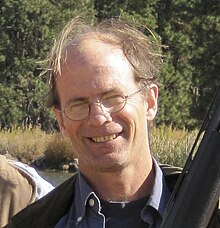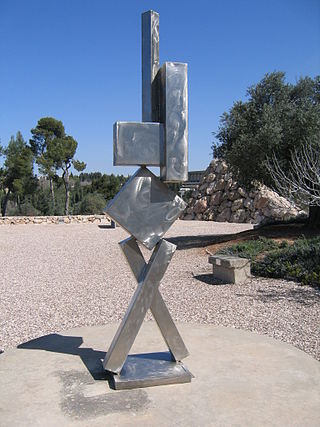
Abstract expressionism in the United States emerged as a distinct art movement in the immediate aftermath of World War II and gained mainstream acceptance in the 1950s, a shift from the American social realism of the 1930s influenced by the Great Depression and Mexican muralists. The term was first applied to American art in 1946 by the art critic Robert Coates. Key figures in the New York School, which was the epicenter of this movement, included such artists as Arshile Gorky, Jackson Pollock, Franz Kline, Mark Rothko, Norman Lewis, Willem de Kooning, Adolph Gottlieb, Clyfford Still, Robert Motherwell and Theodoros Stamos among others.

Helen Frankenthaler was an American abstract expressionist painter. She was a major contributor to the history of postwar American painting. Having exhibited her work for over six decades, she spanned several generations of abstract painters while continuing to produce vital and ever-changing new work. Frankenthaler began exhibiting her large-scale abstract expressionist paintings in contemporary museums and galleries in the early 1950s. She was included in the 1964 Post-Painterly Abstraction exhibition curated by Clement Greenberg that introduced a newer generation of abstract painting that came to be known as color field. Born in Manhattan, she was influenced by Greenberg, Hans Hofmann, and Jackson Pollock's paintings. Her work has been the subject of several retrospective exhibitions, including a 1989 retrospective at the Museum of Modern Art in New York City, and been exhibited worldwide since the 1950s. In 2001, she was awarded the National Medal of Arts.

Julian Schnabel is an American painter and filmmaker. In the 1980s, he received international attention for his "plate paintings" — with broken ceramic plates set onto large-scale paintings. Since the 1990s, he has been a proponent of independent arthouse cinema. Schnabel directed Before Night Falls, which became Javier Bardem's breakthrough Academy Award-nominated role, and The Diving Bell and the Butterfly, which was nominated for four Academy Awards. For the latter, he won the Cannes Film Festival Award for Best Director and the Golden Globe Award for Best Director, as well as receiving nominations for the Academy Award for Best Director and the César Award for Best Director.

Hans Hofmann was a German-born American painter, renowned as both an artist and teacher. His career spanned two generations and two continents, and is considered to have both preceded and influenced Abstract Expressionism. Born and educated near Munich, he was active in the early twentieth-century European avant-garde and brought a deep understanding and synthesis of Symbolism, Neo-impressionism, Fauvism, and Cubism when he emigrated to the United States in 1932. Hofmann's painting is characterized by its rigorous concern with pictorial structure and unity, spatial illusionism, and use of bold color for expressive means. The influential critic Clement Greenberg considered Hofmann's first New York solo show at Peggy Guggenheim’s Art of This Century in 1944 as a breakthrough in painterly versus geometric abstraction that heralded abstract expressionism. In the decade that followed, Hofmann's recognition grew through numerous exhibitions, notably at the Kootz Gallery, culminating in major retrospectives at the Whitney Museum of American Art (1957) and Museum of Modern Art (1963), which traveled to venues throughout the United States, South America, and Europe. His works are in the permanent collections of major museums around the world, including the Metropolitan Museum of Art, Tate Modern, Germanisches Nationalmuseum, National Gallery of Art, and Art Institute of Chicago.
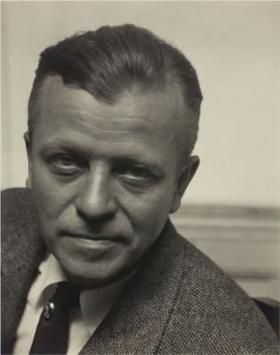
Arthur Garfield Dove was an American artist. An early American modernist, he is often considered the first American abstract painter. Dove used a wide range of media, sometimes in unconventional combinations, to produce his abstractions and his abstract landscapes. Me and the Moon from 1937 is a good example of an Arthur Dove abstract landscape and has been referred to as one of the culminating works of his career. Dove made a series of experimental collages in the 1920s. He also experimented with techniques, combining paints like hand mixed oil or tempera over a wax emulsion as exemplified in Dove's 1938 painting Tanks, in the collection of the Boston Museum of Fine Arts.

Derek Fordjour is an American interdisciplinary artist and educator of Ghanaian heritage who works in collage, video/film, sculpture, and painting. Fordjour lives and works in New York City.
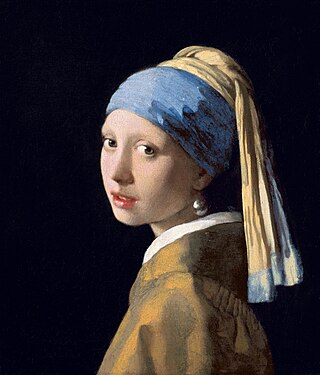
The history of Western painting represents a continuous, though disrupted, tradition from antiquity until the present time. Until the mid-19th century it was primarily concerned with representational and Classical modes of production, after which time more modern, abstract and conceptual forms gained favor.
Brice Brown is an American artist who lives and works in New York City.

Donald Hamilton Fraser RA, was a British artist famed for his abstract landscape paintings.
Robert Goodnough was an American abstract expressionist painter. A veteran of World War II, Goodnough was one of the last of the original generation of the New York School;, even though he began exhibiting his work in galleries in New York City in the early 1950s. Robert Goodnough was among the 24 artists from the total of 256 participants who were included in the famous 9th Street Art Exhibition, (1951) and in all the following New York Painting and Sculpture Annuals from 1953 to 1957. These Annuals were important because the participants were chosen by the artists themselves. Early in his career starting in 1950 he showed his paintings at the Wittenborn Gallery, NYC. He had shown at the Tibor de Nagy Gallery in New York City from 1952 to 1970 and again from 1984 to 1986. In 1960 and 1961 he had solo exhibitions at The Art Institute of Chicago. A veteran of scores of solo exhibitions and hundreds of group exhibitions in the United States and abroad, Goodnough also had solo exhibitions in 1969 at the Whitney Museum of American Art in NYC and the Albright-Knox Art Gallery in Buffalo. A major work by Goodnough is included in The Governor Nelson A. Rockefeller Empire State Plaza Art Collection in Albany, NY. In later years his paintings were also associated with the Color Field movement.

Peter Plagens is an American artist, art critic, and novelist based in New York City. He is most widely known for his longstanding contributions to Artforum and Newsweek, and for what critics have called a remarkably consistent, five-decade-long body of abstract formalist painting. Plagens has written three books on art, Bruce Nauman: The True Artist (2014), Moonlight Blues: An Artist's Art Criticism (1986) and Sunshine Muse: Modern Art on the West Coast, 1945-70 (1974), and two novels, The Art Critic (2008) and Time for Robo (1999). He has been awarded major fellowships for both his painting and his writing. Plagens's work has been featured in surveys at the Museum of Modern Art, Los Angeles County Museum of Art (LACMA), Whitney Museum, and PS1, and in solo exhibitions at the Hirshhorn Museum and Las Vegas Art Museum. In 2004, the USC Fisher Gallery organized and held a 30-year traveling retrospective of his work. Critics have contrasted the purely visual dialogue his art creates—often generating more questions than answers—with the directness of his writing; they also contend that the visibility of his bylines as a critic has sometimes overshadowed his artmaking—unduly. Los Angeles Times critic David Pagel described Plagens's painting as a "fusion of high-flying refinement and everyday awkwardness" with an intellectual savvy, disdain for snobbery and ungainliness he likened to Willem de Kooning's work. Reviewing Plagens's 2018 exhibition, New York Times critic Roberta Smith called the show an "eye-teasing sandwich of contrasting formalist strategies," the hard-won result of a decade of focused experimentation.
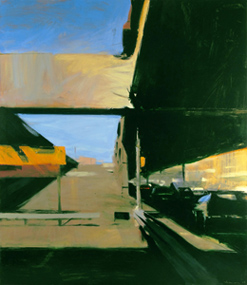
Ben Aronson is an American painter living in Massachusetts. His work is represented by Tibor de Nagy Gallery in New York, Jenkins Johnson Gallery in San Francisco, LewAllen Galleries in Santa Fe, and Alpha Gallery in Boston.

Jane Wilson (1924–2015) was an American painter associated with both landscape painting and expressionism. She lived and worked in New York City and Water Mill, New York.
James Havard was an American painter and sculptor. He was a pioneer of abstract illusionism in the 1970s. In the 1980s he changed his style into a form of abstract expressionism influenced by Native American and tribal cultures as well as outsider art. Drawing inspiration from outsider and tribal art, Havard stands within a tradition that includes such notable artists as Paul Gauguin, Cy Twombly, Jean Dubuffet, Jean-Michel Basquiat, and Joseph Beuys.

Thornton Willis is an American abstract painter. He has contributed to the New York School of painting since the late 1960s. Viewed as a member of the Third Generation of American Abstract Expressionists, his work is associated with Abstract Expressionism, Lyrical Abstraction, Process Art, Postminimalism, Bio-morphic Cubism and Color Field painting.
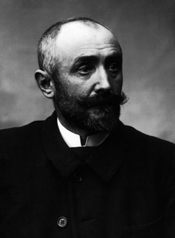
Henry Moret was a French Impressionist painter. He was one of the artists who associated with Paul Gauguin at Pont-Aven in Brittany. He is best known for his involvement in the Pont-Aven artist colony and his richly colored landscapes of coastal Brittany.

Gary Stephan is an American abstract painter born in Brooklyn who has exhibited his work throughout the United States and Europe.
Cy Gavin is an American artist, in paint, sculpture, performance art, and video, who lives and works in New York. Gavin has often incorporated unusual materials in his paintings such as tattoo ink, pink sand, diamonds, staples, and seeds.

Brenda Zlamany is an American artist best known for portraiture that combines Old Master technique with a postmodern conceptual approach. She gained attention beginning in the 1990s, when critics such as Artforum's Barry Schwabsky, Donald Kuspit and John Yau identified her among a small group of figurative painters reviving the neglected legacies of portraiture and classical technique by introducing confrontational subject matter, psychological insight and social critique. Her early portraits of well-known male artists, such as Chuck Close and Leon Golub, reversed conventional artist/sitter gender and power dynamics; her later projects upend the traditionally "heroic" nature of portraiture by featuring underrepresented groups and everyday people.

Louise Belcourt is a Canadian-American artist based in New York, known for elusive, largely abstract paintings that blend modernist formal play, a commitment to the physical world, and a visual language that shifts between landscape and the body, architecture and geometric form. New York Times critic Ken Johnson writes of her earlier work, "balancing adroitly between Color Field abstraction and Pop-style representation, Ms. Belcourt's paintings invite meditation on the perceptual, the conceptual and how our minds construct the world." Describing her later evolution, David Brody writes in Artcritical, "Hard-nosed Canadian empiricism and Brooklyn grit seem to combine in Belcourt’s work to undermine stylistic stasis."
